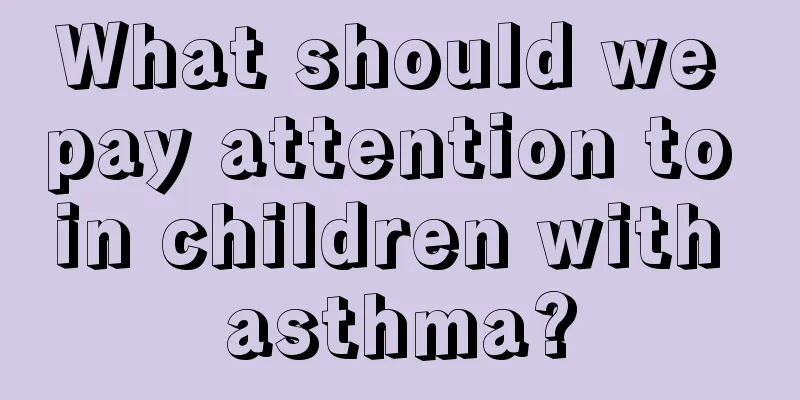What should we pay attention to in children with asthma?

|
Asthma is a very common disease, which can be divided into congenital and acquired. In general, congenital asthma is more common than acquired asthma, and is usually inherited more from parents. Asthma is very painful. You cannot do strenuous exercise, running, or other sports you like. So, what situations should we pay attention to when it comes to childhood asthma? Let’s take a look at the information below. It is believed that bronchial asthma is a chronic, persistent inflammatory disease of the airways, in which many cells play an important role, such as lymphocytes, eosinophils, mast cells, etc., and is accompanied by a significant increase in nonspecific airway responses. The onset of asthma in children may vary depending on their age and different triggers. Most asthma in infants and young children is induced by upper respiratory tract viral infection and has a slow onset, while asthma in children is mostly induced by inhaled allergens and has a more acute onset. The initial symptom of asthma is an irritating dry cough, followed by wheezing symptoms of varying severity. In mild cases, there is no shortness of breath, only scattered wheezing sounds and prolonged exhalation time in both lungs; in severe cases, there is severe expiratory dyspnea, irritability, sitting for breathing, and even pale face, cyanosis of lips and nails, and confusion, which are serious symptoms of the disease. The three-depression sign can be seen on physical examination. When exhaling, the intercostal spaces are full, the lungs sound drum-like when percussed, the upper border of the liver moves downward, and the heart border shrinks, showing obvious emphysema. Wheezing can be heard in the entire lung. If there is a lot of bronchial exudate, moist rales may appear. In severe cases, due to extremely low lung ventilation, the wheezing sound in both lungs may disappear, and even no breath sounds can be heard. Asthma usually gets better on its own or with medication. The disease is characterized by recurrent attacks, with some patients showing clear seasonality and more frequent attacks at night. During the intervals between attacks, the symptoms of most children disappear completely, but a few children may experience night coughing and chest tightness. The above are the relevant matters that you should pay attention to regarding childhood asthma. In daily life, children should not be allowed to engage in strenuous exercise, run, chase or play. If a child is found to have symptoms of asthma, emergency measures should be taken in time, and the child should be sent to the hospital for treatment in time, and the doctor's arrangements should be followed. |
<<: What should I do if my child always suffers from insomnia?
>>: Why is the child's hair yellow?
Recommend
What is the cause of red spots on children's bodies?
Parents should pay attention when red spots appea...
What is the cause of suppuration after BCG vaccination in infants?
In order to prevent tuberculosis, newborn babies ...
How to identify baby's laryngeal softening
Most people may not be particularly aware of the ...
Why does the newborn baby always hum when sleeping at night?
With the coming of more and more babies into the ...
Which vitamin supplement is best for children?
Vitamins are indispensable nutrients in our body,...
What to do if the Chinese medicine is too bitter for children
In fact, Chinese medicine has much fewer side eff...
Treatment for snoring in children
We know that many children have the habit of snor...
What should children drink to grow taller quickly?
In this era, the person with the highest status i...
Treatment for pimples on children
The incidence of pimples on children's bodies...
2 and a half year old baby has developmental delay
If you find that your baby has developmental dela...
What jewelry is good for newborns?
When a baby is born in the family, the whole fami...
Will children become stupid if they eat too much meat?
We all know that children should supplement nutri...
At what age should children be dewormed
Many parents know about deworming their children....
Baby's back red spots
The health of children is what parents are most c...
Causes of fever in children's hands and feet
Relatively speaking, children's constitution ...









